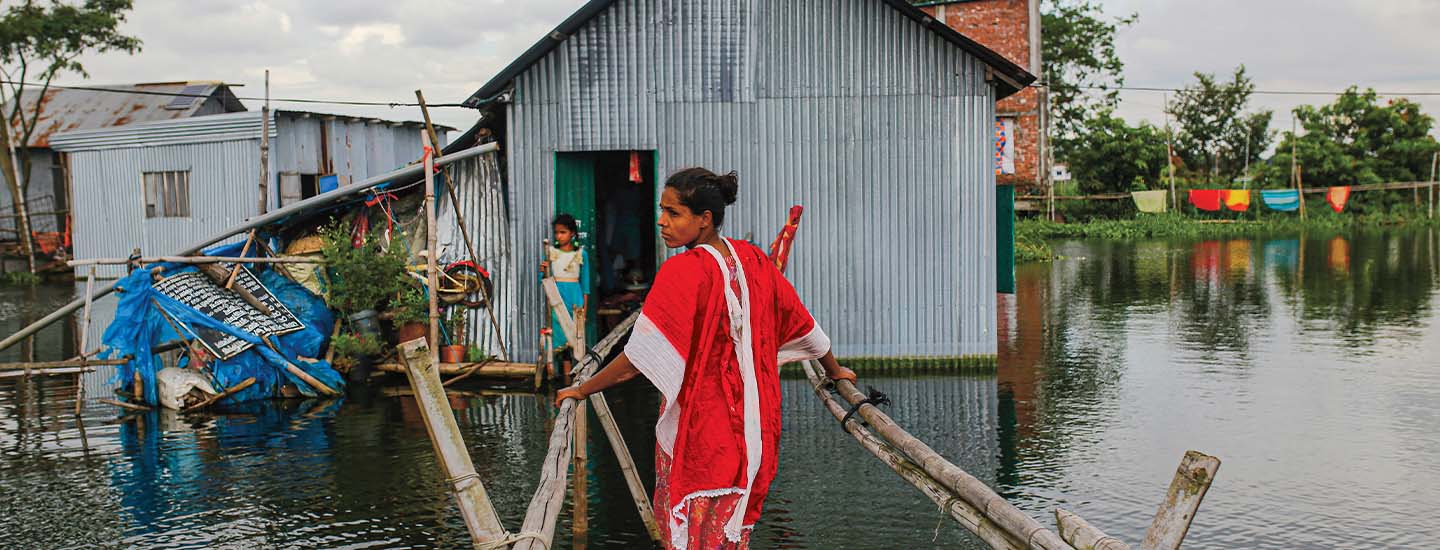All it takes is one storm. Hurricane-strength winds rip apart buildings. Heavy rain and flooding swallow acre after acre of land. In a matter of hours, tens of thousands of homes are destroyed, along with the land they once stood on.
When the skies clear and the waters retreat, the people of Bangladesh do what they’ve done for generations—they rebuild and adapt. Then they brace for the next catastrophe. After all, their low-lying coastal country in South Asia is a magnet for strong storms like cyclones and other natural disasters.
But rebuilding and adapting in Bangladesh is getting harder. Climate change—a long-term shift in Earth’s temperature and weather patterns made much more extreme by human activity—is intensifying the country’s normal weather events. Cyclones are becoming more powerful. Floodwaters are surging higher. And heat waves are becoming unbearable.
All it takes is one storm. Hurricane-strength winds rip apart buildings. Heavy rain and flooding swallow acre after acre of land. In a matter of hours, tens of thousands of homes are destroyed. So is the land they once stood on.
Then the skies clear. The waters retreat. And the people of Bangladesh do what they have done for generations: They rebuild and adapt. Then they brace for the next catastrophe. After all, their low-lying coastal country in South Asia is a magnet for strong storms like cyclones and other natural disasters.
But rebuilding and adapting in Bangladesh is getting harder. Climate change is a long-term shift in Earth’s temperature and weather patterns made much more extreme by human activity. It is intensifying the country’s normal weather events. Cyclones are becoming more powerful. Floodwaters are surging higher. And heat waves are becoming unbearable.

